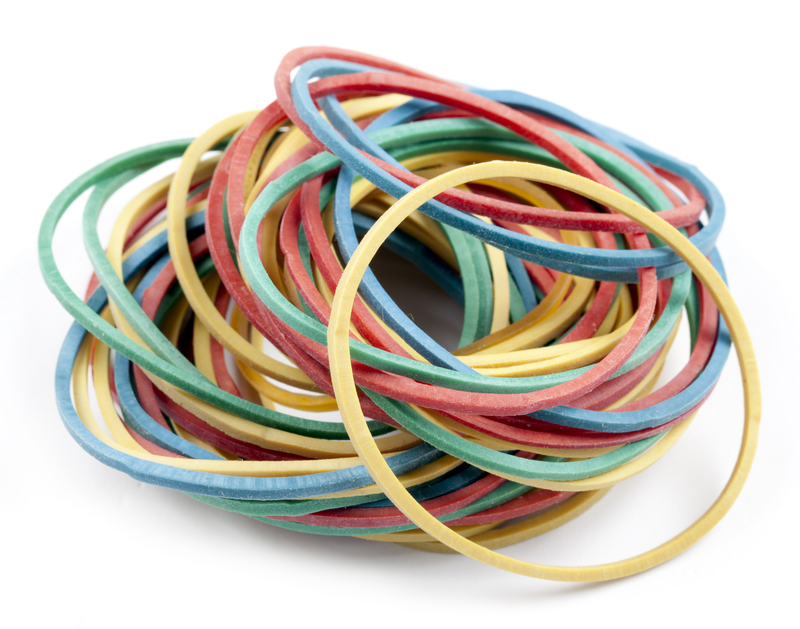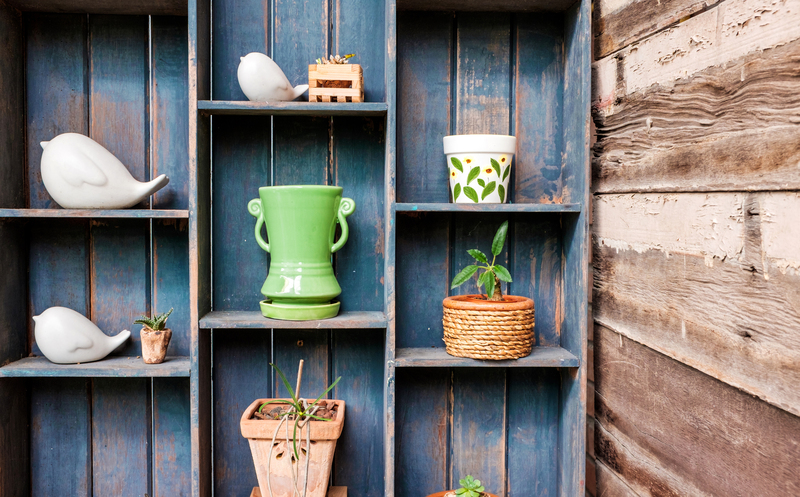How to Help the Environment When Replacing Your Pots and Pans
Are you considering upgrading your cookware set? Replacing old, worn-out pots and pans is a common kitchen routine, but have you ever thought about how to minimize environmental impact throughout the process? In this comprehensive guide, we will explore everything you need to know about making earth-friendly choices when it's time for new cookware. Let's take steps together to make your kitchen overhaul eco-friendly!
Why Your Cookware Choices Matter for the Environment
Many of us use our pots and pans daily without a second thought. Yet, the way you replace your cookware can have significant ripple effects on our planet:
- Resource Extraction: Pots and pans are often made from metals like aluminum, stainless steel, or copper, the extraction and processing of which depletes finite resources and consumes a lot of energy.
- Waste and Landfills: Old, non-recyclable cookware typically ends up in landfills, where it takes decades or even centuries to break down.
- Chemical Pollution: Nonstick coatings can release toxins into the environment, especially when disposed of improperly.
By following sustainable practices when replacing your pots and pans, you can help reduce your personal ecological footprint and promote a greener, healthier world.

Choosing Eco-Friendly Cookware
Before you toss your old pots and pans, let's discuss the primary factors to consider when selecting your next set. Opting for sustainable cookware is one of the most impactful ways to help the environment.
Materials: Which are the Most Sustainable?
- Stainless Steel: Durable, recyclable, and long-lasting. Stainless steel can be recycled many times without loss of quality. Look for items made from high-percentage recycled content.
- Cast Iron: Nearly indestructible and often passed down for generations. Cast iron can last a lifetime and is fully recyclable.
- Copper: Excellent in heat conduction. Ensure that any copper cookware you buy is made with recycled copper and is recyclable at end-of-life.
- Ceramic and Glass: These materials are often derived from natural resources and are free of harmful chemicals. Make sure they have no toxic coatings or glazes.
- Recycled Aluminum: Aluminum production is resource-intensive, but using recycled aluminum drastically reduces energy consumption.
Avoid: Cheap nonstick pans that use PTFE (Teflon) or PFOA, as these are not only less durable but can leak dangerous substances into food and the environment. Choose ceramic or advanced eco-nonstick options instead.
Certifications & Responsible Brands
- Look for third-party certifications such as Cradle to Cradle, Green Seal, or Greenguard.
- Support brands with transparent supply chains and ethical labor practices.
- Purchase from manufacturers that offer take-back or recycling programs for old cookware.
Longevity Is Sustainability
The longer your pots and pans last, the better it is for the planet. Invest in durable, well-made pieces. Classic designs and quality materials are always in style and won't need frequent replacement.
How to Responsibly Dispose of Your Old Pots and Pans
Now, let's address the big question: What should you do with your old cookware? tossing them in the trash should be your absolute last resort. Here are some environmentally friendly ways to handle your outgoing kitchen gear:
Recycle Your Old Cookware
- Most metals (steel, aluminum, copper) are highly recyclable. Remove non-metal attachments--plastic handles, lids, or glass components--before recycling.
- Contact your local recycling center to verify their acceptance of cookware items. Some curbside programs may not accept them.
- Specialty scrap metal dealers are often the best bet for drop-off.
Tip: Place small pieces in a metal recycling bin, but for large sets, consider calling ahead.
Donate or Repurpose If Still Usable
- Charities, shelters, and thrift stores often accept gently used cookware.
- College students, first-apartment dwellers, or friends might be happy to take them off your hands.
- If your pan is only cosmetically damaged, consider donating it to community kitchens or art programs.
Creative Upcycling Ideas
When recycling or donating isn't an option, get creative:
- Use old pots as quirky planters for herbs or flowers--just add drainage holes!
- Turn cast-iron pans into unique wall art, clock faces, or serving trays.
- Transform lids into garden stepping stones by painting or mosaicing them.
- Employ broken handles for rustic hooks or handles in garden sheds.
Manufacturer Take-Back and Recycling Programs
- Some manufacturers (e.g., Le Creuset, GreenPan, Made In) offer recycling take-back programs--check their websites for details.
- Mail-in recycling services, such as TerraCycle, accept a variety of kitchenware at a small fee.
Smart Shopping Tips for Reducing Cookware Waste
Prevention is the most effective strategy for minimizing your impact. Keep these guidelines in mind when replacing pots and pans to help the environment:
1. Buy Only What You Need
- Resist impulse buying: Avoid large kitchen sets with items you won't use.
- Invest in multipurpose pieces: A Dutch oven or saute pan can perform multiple cooking tasks.
2. Choose Timeless Designs
- Classic, neutral styles won't go out of fashion and are less likely to end up discarded.
- Solid construction and riveted handles outlast trends and gimmicks.
3. Prioritize High-Quality and Repairable Cookware
- Seek brands that offer warranties or repair services rather than disposables.
- Many companies sell replacement handles, knobs, and parts--extending the life of your purchase.
4. Consider Secondhand Options
- Check thrift shops, online marketplaces, or community groups for lightly used high-quality cookware.
- Buying secondhand keeps products in use (and out of landfills) longer.
Understanding the Environmental Impact of Cookware Materials
Each type of cookware comes with its own carbon footprint and environmental considerations. Here's a quick breakdown:
- Aluminum: While lightweight and inexpensive, virgin aluminum requires large amounts of energy and results in significant emissions. Recycled aluminum is the greener choice.
- Stainless Steel: Energy-intensive to manufacture but extremely durable. "Recycled content" stainless steel is eco-friendlier.
- Copper: Mining for copper can be extremely harmful to the environment. Prefer cookware made with recycled copper only.
- Nonstick (PTFE/Teflon): Manufacturing releases toxic chemicals; disposal releases microplastics. Choose ceramic or naturally nonstick options.
- Cast Iron: If properly cared for, cast iron lasts centuries--reducing overall demand and waste.
How to Extend the Life of Your New Pots and Pans
The greenest pan is the one you don't have to replace. Once you've selected eco-conscious cookware, maintain it properly to reduce future waste and environmental impact:
Proper Care Tips
- Always use gentle scrubbers--metal scouring pads can damage coatings or surfaces.
- Hand wash whenever possible, even if the cookware says dishwasher-safe; this preserves nonstick and colored finishes.
- For cast iron, keep it seasoned with a thin layer of oil after each use to prevent rust.
- Avoid cooking sprays, which can build up residues on nonstick pans.
- Store with care--use cloth or felt protectors between pans to prevent scratches.
Where to Find Repair Services
- Contact the manufacturer about authorized repair centers or replacement parts.
- Look for local kitchenware repair or re-enameling services.
- Many metropolitan areas or online services specialize in recoating or re-seasoning cookware.
Reducing Your Kitchen's Overall Environmental Impact
Making eco-friendly choices doesn't stop at replacing kitchenware. Here are more ways to create a greener kitchen at home:
- Choose energy-efficient appliances and cook on lower heat settings when possible.
- Opt for lids that fit snugly, reducing cooking time and energy waste.
- Be mindful of water usage when washing cookware.
- Compost food scraps to avoid landfill waste.

Frequently Asked Questions on Eco-Friendly Pots and Pans Replacement
Q: Can most pots and pans really be recycled?
Answer: Yes, most metal-based cookware can be recycled, but it depends on your local recycling facilities. Always remove all plastic or rubber components first.
Q: What's the best eco-friendly material for pots and pans?
Answer: Cast iron and stainless steel are both excellent sustainable choices because they're long-lasting and fully recyclable. Ceramic and glass are also good, provided they lack toxic glazes or coatings.
Q: What should I avoid when buying new cookware for the environment's sake?
Answer: Avoid cheap nonstick pans containing PTFE/PFOA and cookware made from virgin metals with little to no recycled content.
Q: Are there brands that recycle cookware?
Answer: Absolutely! Check out GreenPan, Made In, Le Creuset, and local kitchenware retailers with eco-friendly initiatives.
Conclusion: Making Your Kitchen Transformation Count for the Planet
Choosing to help the environment when replacing your pots and pans isn't just a trend--it's a responsibility and an opportunity. By selecting sustainable cookware, recycling or donating old items, and extending the lifespan of your purchases, you contribute to a cleaner and more sustainable world.
Remember: Every little step, from recycling your old stock pot to investing in timeless, high-quality pieces, adds up. Empower yourself and inspire friends and family with your greener kitchen choices.
Ready to breathe new life into your kitchen while keeping the planet in mind? Let's make every meal an eco-friendly endeavor!
